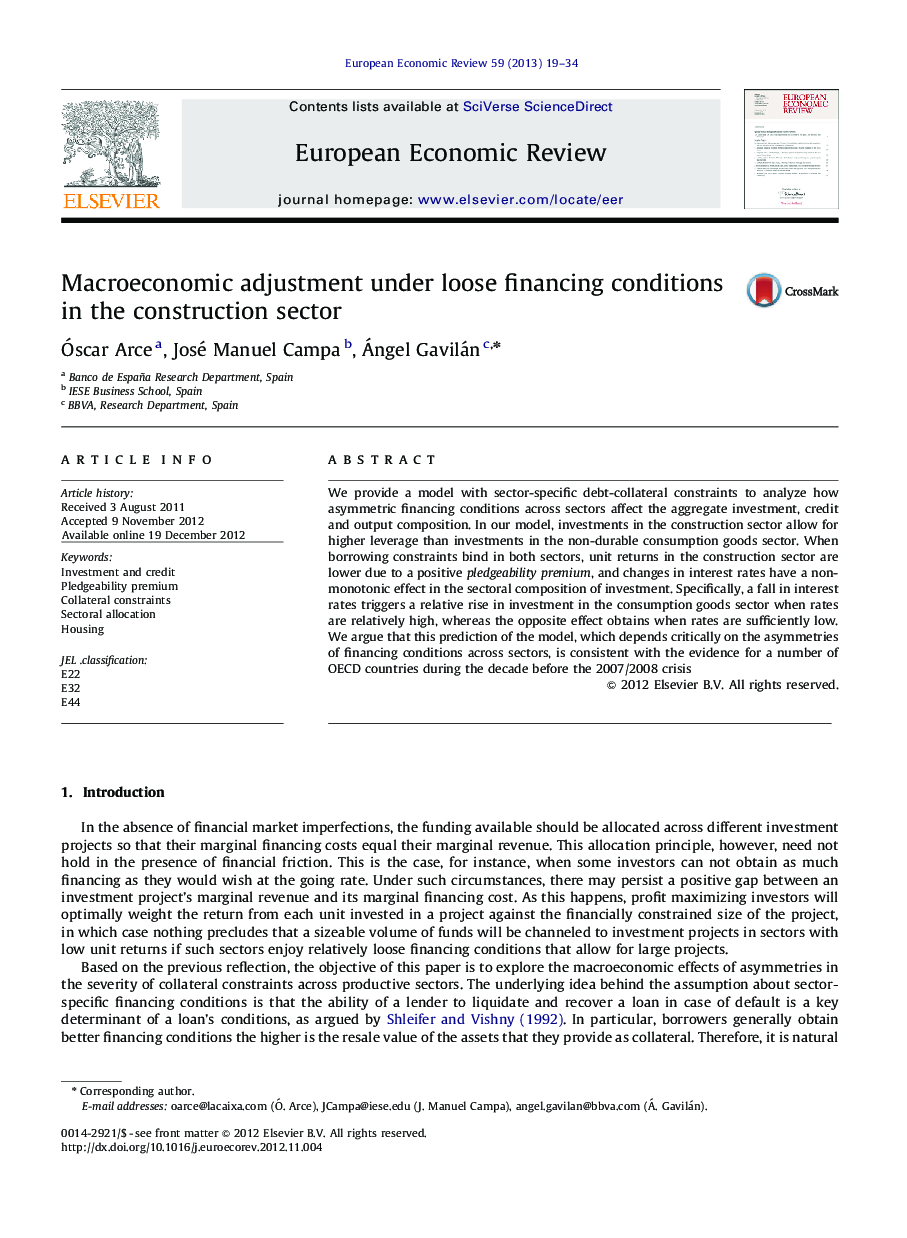| Article ID | Journal | Published Year | Pages | File Type |
|---|---|---|---|---|
| 5067006 | European Economic Review | 2013 | 16 Pages |
We provide a model with sector-specific debt-collateral constraints to analyze how asymmetric financing conditions across sectors affect the aggregate investment, credit and output composition. In our model, investments in the construction sector allow for higher leverage than investments in the non-durable consumption goods sector. When borrowing constraints bind in both sectors, unit returns in the construction sector are lower due to a positive pledgeability premium, and changes in interest rates have a non-monotonic effect in the sectoral composition of investment. Specifically, a fall in interest rates triggers a relative rise in investment in the consumption goods sector when rates are relatively high, whereas the opposite effect obtains when rates are sufficiently low. We argue that this prediction of the model, which depends critically on the asymmetries of financing conditions across sectors, is consistent with the evidence for a number of OECD countries during the decade before the 2007/2008 crisis
⺠We analyze how asymmetric financing conditions across sectors affect investment composition. ⺠In our two-sector model, investments in the construction sector allow for the highest leverage. ⺠In this setup, interest rates have a non-monotonic effect in the investment sectoral composition. ⺠This prediction of the model is consistent with evidence for OECD countries in the period 1995-2006.
